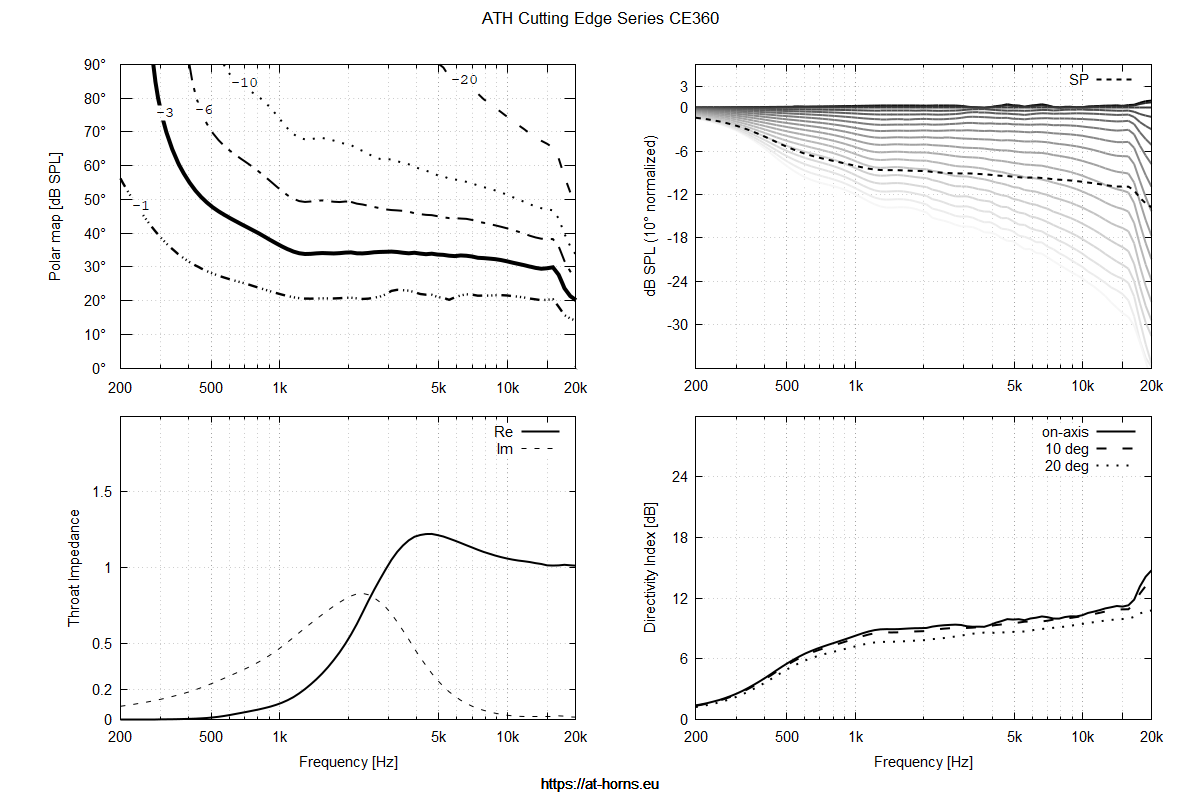Personally I don't believe that's the case. Very seldom are the acoustic conditions such that a narrow beamwidth speakers could show their full potential, IMHO. Now after I saw the M2 raw data, it's exactly what I was thinking before - it's basically flat. That simply can't sound natural right out of the box, compared to a "standard" speaker with a gently downward-sloped power response. If EQed properly and in the right room (i.e. not over-damped for that kind of design), I believe it would be actually clearly prefered over e.g. the big Revels. At least that is my experience.All of the subjective listening tests seem to indicate that people prefer speakers with a wider beamwidth.
Last edited:
What kind of acoustic conditions would a narrow beamwidth prefer would you say? There general idea seem to be that a more narrow directive speaker would be less dependent on its surroundings....
Please read the paper: http://www.gedlee.com/Papers/Philosophy.pdf
I supposed this is the common knowledge
Could you point me to an example? I've seen this mentioned several times but I still don't know what you talk about...One thing that you can use to your advantage, is to shape the enclosure in such a way that it extends the beamwidth control down to 500Hz or even 250Hz. Check out the Klippel measurements on erinsaudiocorner and audiosciencereview, and you'll see that there are speakers with relatively small waveguides that offer beamwidth control down to 500Hz. This is achieved by a combination of enclosure geometry and waveguide geometry.
This might be a good example of a small speaker that controls directivity way below its tiny waveguide with a matching baffle design. It's not constant, but there is a good amount of directivity control.
DXT-MON | 5″ 1″ | Nahfeldmonitor | Kompaktlautsprecher
DXT-MON | 5″ 1″ | Nahfeldmonitor | Kompaktlautsprecher
I realized it doesn't really make sense to me to keep it secret, so here it is - the CE360.
I have only one request - please give credit where credit is due.
This is great mabat, thanks for this. Also fantastic tool!!!
Agreed, that's not my experience.Personally I don't believe that's the case.
What kind of acoustic conditions would a narrow beamwidth prefer would you say? There general idea seem to be that a more narrow directive speaker would be less dependent on its surroundings....
The smaller the room the greater the need for high DI.
You did use the same driver bmc0. You also know the throat length?
I did not consider the throat length in my design, only the throat angle (which is 10.08° [20.16° included], according to Celestion).
It's difficult to measure accurately (especially when the driver is mounted), but the conical part appears to be about 20mm in length.
Hi Marcel,
I am a little confused. Your first sentence expresses disagreement with Patrick's opinion that "people prefer speakers with a wider beamwidth", but the highlighted part of your second sentence implies that wide beam-width speakers are preferable since "more often" (antonym to very seldom), the acoustic condition are such that wide beam-width speakers could show their full potential.
Could you please clarify?
The second question is in regards to the CE360 plot in post #7923. If I am interpreting the plot correctly, which may not be true, the beam-width is about 40 deg up to 1 kHz. Since the intended 1 inch driver is usually crossed-over about that frequency, is the CE36 intended to be used with a smaller diameter woofer that has like beam-width at that frequency?
Kindest regards,
M
Personally I don't believe that's the case. Very seldom are the acoustic conditions such that a narrow beamwidth speakers could show their full potential, IMHO.
I am a little confused. Your first sentence expresses disagreement with Patrick's opinion that "people prefer speakers with a wider beamwidth", but the highlighted part of your second sentence implies that wide beam-width speakers are preferable since "more often" (antonym to very seldom), the acoustic condition are such that wide beam-width speakers could show their full potential.
Could you please clarify?
The second question is in regards to the CE360 plot in post #7923. If I am interpreting the plot correctly, which may not be true, the beam-width is about 40 deg up to 1 kHz. Since the intended 1 inch driver is usually crossed-over about that frequency, is the CE36 intended to be used with a smaller diameter woofer that has like beam-width at that frequency?
Kindest regards,
M
I did not consider the throat length in my design, only the throat angle (which is 10.08° [20.16° included], according to Celestion).
Sometimes, I find that I still do not understand all English. What means 20.16° included? Does it mean that one side is 10.08°, the factor entered into ath, and the total throat angle is 20.08° Also thanks for the other measurement.
The beamwidth is read off the -6dB line and is half the pattern angle in that graph. The waveguide is about 100 degrees at 1k and 80 degrees at 10K. It will match with a 12" Woofer over a reasonable range of frequencies.The second question is in regards to the CE360 plot in post #7923. If I am interpreting the plot correctly, which may not be true, the beam-width is about 40 deg up to 1 kHz. Since the intended 1 inch driver is usually crossed-over about that frequency, is the CE36 intended to be used with a smaller diameter woofer that has like beam-width at that frequency?
- Home
- Loudspeakers
- Multi-Way
- Acoustic Horn Design – The Easy Way (Ath4)
